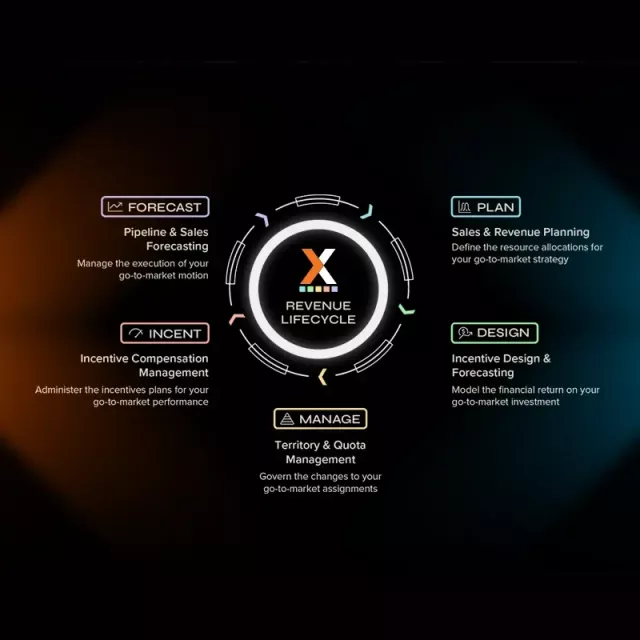
Every leader within an organization has heard of the sales ops and finance nightmare–you’re making high sales incentive compensation payouts, but as a whole, the company misses its sales targets and goals. So what happens if the sales incentive plans blow up? What will it look like? Will the company end-up owing one sales rep millions due to a technicality with how the compensation plan was written?
Surprisingly, the most common way for a sales incentive plan to “blow-up” is a slow process that occurs over a long period of time. The leadership team spends too much time making sure that the plan is protected from the one-off aberrant high payout (often rightfully so) that they often miss that they are planting the seeds for an eventual pay misalignment.
The following are examples of how this scenario can occur:
“We need to focus on this highly strategic product.”
A company may have a good track record with setting goals at an aggregate level, but what if a new strategy forces you to create a plan that differentiates pay by product? Product-specific measures in a compensation plan seem like an obvious solution, but whenever a goal is stratified, the level of goal accuracy falls.
For example, we recently assisted a large cable company that transitioned from aggregate sales measures to five product-specific sales measures. Within two years, their compensation spend had increased by 20 percent, while sales had fallen by 10 percent. We discovered that sales goal accuracy also plummeted over the same period.
The company’s portfolio of products had a low level of sales volatility and this made setting goals at the aggregate level comparatively easy. However, like a single stock in the stock market, individual products sales were much more volatile. Sales reps were able to time sales and maximize their commission pay with certain products, which also added to volatility.
Ultimately, the best solution for this company was to switch back to an aggregate sales measure with a strategic product pay modifier.
“We need to bring-in heavy hitters.”
In order to attract top talent from the market, companies will offer comparatively high pay levels for high levels of performance. In order to pay for this, companies will often decrease payments for lower performers (the ‘reverse Robin Hood’).
However, this model assumes that there is a sizeable pool of low performers (often 3-6 low performers are modeled to pay for 1 top performer). Once that pool is depleted, plan modelers will begin to target the middle performers. At this point, rep churn begins to increase because the plan is now prioritizing the pay of a handful of reps at the expense of everyone else.
A recent client asked us how they could move the “mighty middle performers” of their salesforce, and a quick examination of their sales incentive program (SIP) clearly showed that is was built around rewarding only the very top performers. This example also illustrates why it is not completely unexpected for a company to slightly miss its goals while the salesforce collectively earns their budgeted incentive pay (or more).
Sales reps are putting a portion of their pay at risk and betting on their ability to influence buyers. If their bet pays off, they require a certain rate of return (most often determined by the market). To remain competitive in a market, companies may need to pay a top performer 200 to 300 percent of their target incentive.
As a result, there may not be a pool of under-performers large enough to fully fund the top performers. While you certainly do not want to get rid of these top performers or pay them less, you also do not want to push the pay of your middle performers and lose the motivational traction of your mighty middle.
“There is such a long period of time between sales that we need to offer a draw.”
Lumpy sales infamously make incentive plan payments unpredictable. The nature of the sales cycle makes goal setting in the short-term difficult. Like the strategic product example above, the more an annual goal is cut-up, the less accurate it becomes. Oftentimes, a large sale that will result in a large incentive payout has been in the pipeline and can close at any time during the year.
The commission forecast has little accuracy, and the reps go through periods where bonus checks are zero or a small fortune. The obvious solution to increase accuracy and predictability in pay is to stretch-out the length of the performance period and pay annually, but this could increase the amount of time between payouts for sales reps, which could hurt morale.
Companies often mitigate this problem by offering draws against commission. Given enough scale and a long enough sales cycle, draws can create a situation where incentive payments are high for long periods without enough sales to draw them down. Ideally, draws work best when incentive payments are high, but total sales are low. We recently worked with a financial services company whose sales reps were expected to close three large deals per year, and 80 percent of their pay was expected to come from commissions for selling the company’s single product offering.
Once a contract was signed, the sales rep would usually wait three months to be paid due to the complexity of the contracting process. To avoid a drop in sales rep morale, the company had created a quarterly draw system, where some of the reps expected earned commission was advanced to the rep with the expectation that those advances would be subtracted from eventual commission earnings.
The expected deals for a year did not close, and the SIP had paid at target while the company missed its sales goal. The reps had negative draw balances flow into the following year and no one was happy.
What’s the Best Solution?
We recommended taking one of two avenues to navigate through each of the above scenarios:
Milestone MBOs
In long, complex sales processes, there are often milestones that quantifiably increase the probability of a specific sale, which can be deducted from an eventual final payout. For example, this includes trials, a small initial percentage of business, or a sale to an affiliate. Poor milestones often fail to link a commitment of a specific future sale, such as the number of calls made or number of presentations. Payments for these milestones are usually a small percentage of the final payment. If there are multiple milestones, they steadily increase in payments as the sales process progresses.
Pay More Up-front
Our financial services client in the example above had a long wait between initial contract signing and a finalized contract because of the variation between the initial commitment and the final size of the sale. Rather than wait until the exact deal revenue was known, we recommended paying 50 percent of commission on the initial contract signing and the remaining 50 percent of commission once the final contract was signed (usually 3-6 months later). As a result, this helped even out the earnings flow of the sales reps and created a greater link between effort and reward. This made it less likely that there was a substantial negative draw balance, and the financial risk to the company was minimal because any pay true-up could be easily made with the 50% pay outstanding.
Final Thoughts
There are many more examples of companies that have adjusted their SIP to solve a problem only to see their plans blow-up. In most cases, the key to preventing incentive pay from being too high compared to total company sales is to be diligent in modeling and flexible in adjusting compensation plan designs down the road.
Most importantly, companies must recognize that not all blow-ups happen quickly, and sometimes they are a slow train coming down the tracks. Learn how you can improve your sales compensation plan with a personalized strategic services consultation today!


